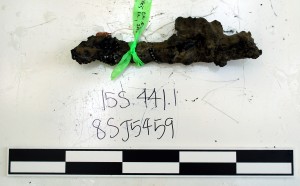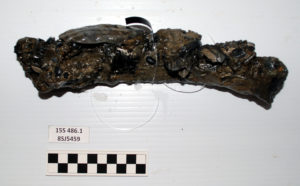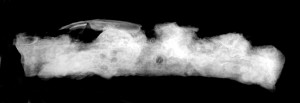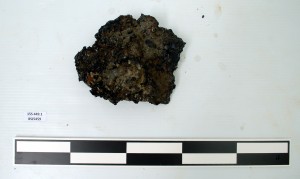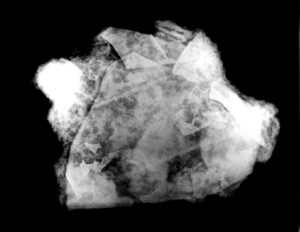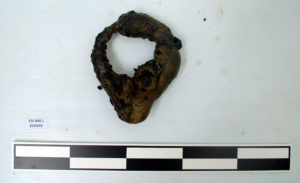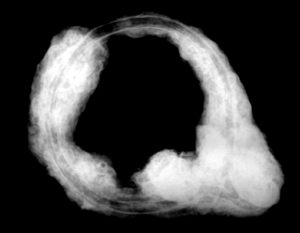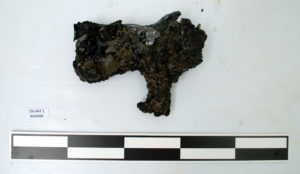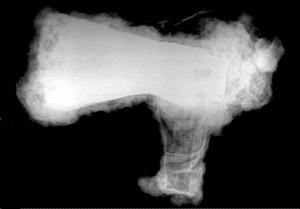As the Summer 2015 surveys and excavation draws to a close, it is time for all the research, reporting and paperwork to begin. For conservation, that means documenting and X-raying the artifacts excavated during the fieldwork.
This is done for a few reasons. First, we obviously want to know what was brought up. The concretions often do not resemble anything or give clues as to what the artifacts are. Second, we want to figure out what the artifacts can tell us about the site itself and if they offer any new information on the wreck.
Finally, it gives us an idea if the artifacts are worth the conservation effort. Conserving artifacts can be costly and time-consuming. Determining an object’s uniqueness, historical value or public interest level helps manage the conservation expectations.
Depending on the size of the pieces, we take them to either of two locations gracious enough to help X-ray and identify the concretions. Larger items or oddly shaped pieces go to Flagler Hospital while smaller artifacts go to Monahan Chiropractic Medical Clinic.
So far, this year, we have only X-rayed five smaller concretions from the Storm Wreck and new test sites.
The first artifact appears to be a long, thin piece of metal with a few shells and unknown objects attached. It is most likely a strap.
The X-ray pretty much confirms the hypothesis that it is a metal strap of some sort, with hardly any original material left.
The second item is also a long, thin object with multiple shells, but with slightly more sediment built up in the concretion. It is also most likely a strap; however, it has a slight curve to it, possibly from a barrel.
The X-ray again shows what is probably a metal strap with little original material remaining.
The third concretion to be X-rayed is a medium-sized blob of indeterminate makeup. It is relatively light for its size.
The X-ray shows multiple pieces of what is most likely a cast iron cauldron. The large piece in the center shows two lines that would have run around the exterior of the cauldron and are typical of others found on the Storm Wreck site. The signatures are not especially strong, suggesting that the cast iron still remains, but is fragile at this point.
The fourth concretion is interesting. It is a ring of some sort, with one side of sediment buildup thicker than the other. It is lightweight and most likely made of either rope, twine or leather.
The image shows a ring with little of the original material reflecting in the X-ray. The circular construction and hollow-looking remains suggest it is originally metal. At this point, it appears to possibly be part of the rigging.
The final artifact in this round of X-rays is easier to identify from the outset. The shape of the concretion suggests it is an axe head with part of the handle, still intact, jutting out from the lower edge.
The X-ray shows exactly what we thought. There is a clear image of the axe head, but with sections of the bit (edge of the blade) missing or mostly corroded. The X-ray also clearly shows the wood grain in the handle.
More X-rays of the larger concretions will be taken soon and hopefully some new and exciting artifacts will reveal themselves.
Andrew Thomson is the Assistant Conservator for the St. Augustine Lighthouse & Maritime Museum. He received his graduate degree and training from the Conservation Research Laboratory at Texas A&M.


